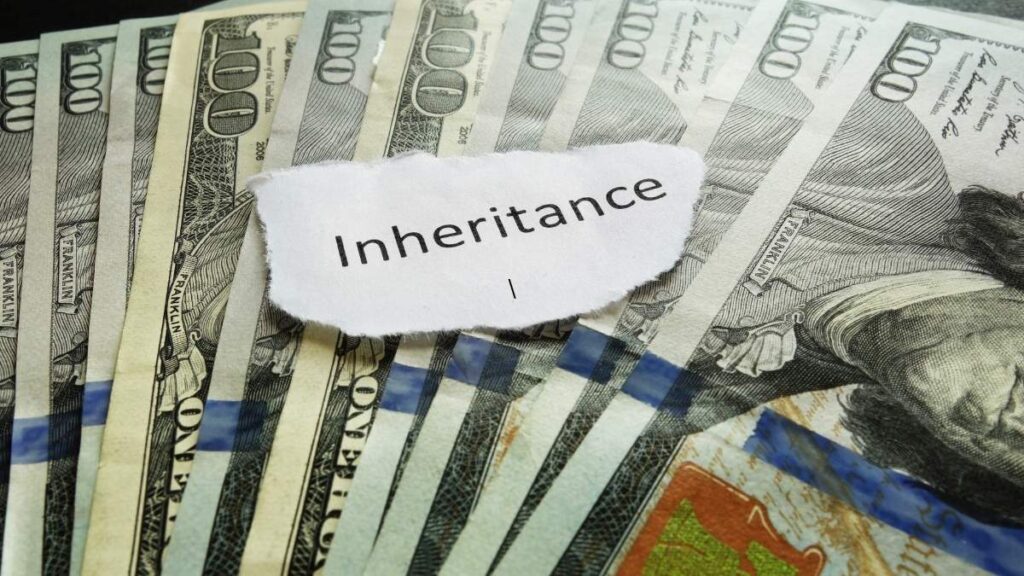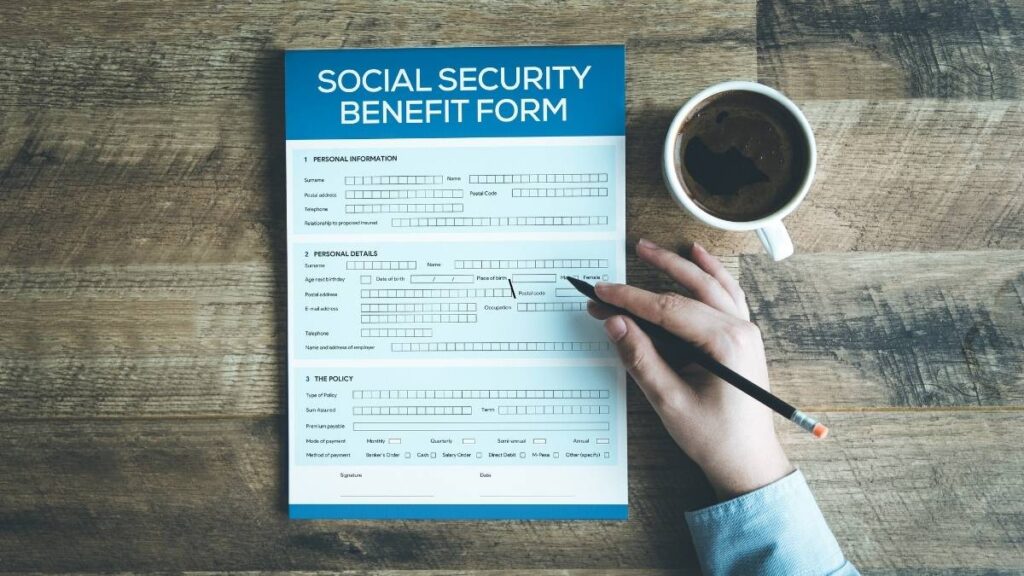
The average Social Security benefit in 2025 is just $1,976 per month—could you live on that alone? If you’re counting on Social Security benefits to fully fund your retirement, you’ve been misled.
The truth is, Social Security was designed to replace only about 40% of your pre-retirement income, creating a significant gap between your needs and what the government provides. In this article, you’ll discover practical strategies to build a diversified retirement plan that ensures real financial security beyond Social Security’s limitations.
From maximizing investment opportunities to creating multiple income streams, it’s time to take control of your retirement planning before it’s too late.
The Reality of Social Security in 2025 and Beyond
You’ve paid into Social Security your entire working life. Now you’re counting on it to fund your retirement. But here’s what nobody wants to tell you: it won’t be enough.

The average Social Security check in 2025 is $1,976 per month. That’s $23,712 per year. Social Security replaces about 40% of what you earned before retirement. Let that sink in. You’ll go from your full salary to less than half overnight.
The 2.5% cost-of-living adjustment for 2025 sounds helpful. It adds about $49 to the average monthly check. But rent doesn’t care about that small bump. Neither does your grocery bill or your heating costs.
Here’s the bigger problem. The Social Security trust fund will run dry by 2033. When that happens, benefits could drop by 23%. Imagine living on $1,976 a month and then losing almost a quarter of it. That’s the future we’re looking at.
The full retirement age keeps climbing too. If you were born in 1960 or later, you can’t collect full benefits until age 67. That’s two extra years of work before you see your complete payout.
Useful Tip: Log into your Social Security account at ssa.gov right now. Check your estimated benefits. Compare that number to your current monthly expenses. This reality check will show you exactly how big your retirement gap is.
Lie #1: “Social Security Will Cover Your Retirement Needs”
Your aunt thinks Social Security will handle everything. Your coworker says it’s all you need. They’re both wrong.
The math doesn’t work. The average retiree spends about $4,345 per month. Social Security pays $1,976. You’re short $2,369 every single month. That’s over $28,000 per year you need to cover somehow.

Healthcare alone will destroy this fantasy. Medicare doesn’t cover everything. You’ll still pay premiums, copays, and deductibles. The average couple needs $315,000 just for healthcare in retirement. Social Security won’t touch that bill.
Housing costs keep rising. Property taxes go up. Maintenance doesn’t stop. If you’re still renting, good luck finding a landlord who accepts “I only have Social Security” as a reason to freeze your rent.
Inflation is the silent killer. That $1,976 check buys less every year. Food costs more. Gas costs more. Everything costs more. Your fixed income becomes less valuable while your expenses grow.
The 40% replacement rate assumes you can live on 40% of your previous income. Most people can’t. You still want to eat out sometimes. You want to see your grandkids. You want to fix things when they break. Life doesn’t suddenly cost 60% less just because you retired.
Useful Tip: Track your spending for one month right now. Don’t change your habits, just write down every dollar. Then multiply by 12. That’s your real annual need. Now subtract your estimated Social Security benefits. The gap you see is what you must save for on your own.
Lie #2: “You Can Worry About Retirement Later”
You’re 28. Retirement feels like science fiction. You’ll start saving when you get that promotion. Or when the kids are older. Or after you pay off the car.

This thinking will cost you hundreds of thousands of dollars.
Start saving $500 per month at age 25, and you’ll have about $1.4 million by age 65 (assuming 8% returns). Wait until age 35 to start? That same $500 monthly gets you only $611,000. You lost $789,000 by waiting ten years.
Want to retire with $1 million? At age 25, you need to save $381 per month. Start at age 35? You need $820 per month. At age 45, you need $2,000 per month for the same goal. The numbers get brutal fast.
Compound interest is your best friend when you’re young. Every dollar you invest at 25 has 40 years to grow. It doubles about five times. That same dollar invested at 45 has only 20 years. It doubles maybe twice.
People in their 50s panic. They realize they have almost nothing saved. They try to catch up by saving 30% or 40% of their income. It’s painful. It’s stressful. Often, it’s too late to hit their goals.
Automatic contributions make this easy. Set up a transfer the day after each paycheck. You never see the money. You don’t miss it. It just grows while you live your life.
Useful Tip: Open a retirement account today, even if you can only put in $50 per month. Set it to automatically withdraw after each paycheck. Check it once per year, not once per day. Time in the market beats timing the market every single time.
Lie #3: “Inheritance Will Bail You Out”
Your parents have a house. They’ve saved money. You’re assuming you’ll inherit something that fixes your retirement gap.

This plan has serious problems.
Most inheritances are much smaller than people expect. The median inheritance in America is around $50,000. That sounds nice until you realize it won’t fund 20+ years of retirement.
Healthcare costs are eating parents’ savings. Long-term care can cost $8,000 to $10,000 per month. A few years in a nursing home can wipe out a lifetime of savings. That house you’re counting on? It might get sold to pay for care.
You don’t know when or if you’ll inherit anything. Your parents might live to 95 and spend every penny enjoying their retirement. They earned it. But your retirement plan can’t depend on this unknown.
Even if you do inherit money, it usually comes when you’re already in your 60s or 70s. You needed that money 20 years earlier when compound interest could have multiplied it.
Siblings change the math too. That $200,000 house gets split three ways. Now you have $66,000, minus taxes and fees. It’s helpful but not life-changing.
Building your own wealth is the only strategy you control. Your 401(k) balance depends on you. Your IRA belongs to you. You make the contributions. You pick the investments. Nobody can take it away or spend it on something else.
Useful Tip: Have an honest conversation with your parents about their plans. Ask about long-term care insurance. Discuss their wishes. Then build your retirement plan assuming you’ll inherit nothing. Anything you do receive becomes a bonus, not your safety net.
Building Your Retirement Beyond Social Security: 2025 Strategies
Social Security covers 40% of your needs. You need to build the other 60% yourself. Here’s how.
Your employer’s 401(k) or 403(b) is your first stop. In 2025, you can contribute up to $23,500 per year. If you’re over 50, add another $7,500 in catch-up contributions. That’s $31,000 total.

Many employers match your contributions. If your company matches 50% of the first 6% you contribute, that’s free money. Always contribute enough to get the full match. Leaving that on the table is like refusing part of your salary.
IRAs give you more options. Traditional IRAs reduce your taxes now. Roth IRAs grow tax-free forever. In 2025, you can put $7,000 into an IRA. Add $1,000 more if you’re over 50.
Choose Roth if you think taxes will be higher when you retire. Choose Traditional if you want the deduction today. Many people split the difference and do both.
Health Savings Accounts (HSAs) are secret retirement gold. You need a high-deductible health plan to qualify. Then you can contribute $4,300 as an individual or $8,550 for families in 2025.
The HSA gives you a triple tax benefit. Contributions reduce your taxable income. Growth is tax-free. Withdrawals for medical expenses are tax-free. After age 65, you can withdraw for any reason and just pay regular income tax, like a Traditional IRA.
New executive orders have opened retirement accounts to alternative investments. You can now hold certain private equity and other assets in your retirement accounts. This isn’t for everyone, but it gives you more choices.
The key is consistency. Maxing out accounts is great. But $300 per month beats $0. Start where you are. Increase contributions every time you get a raise.
Useful Tip: When you get a raise, immediately increase your retirement contribution by half the raise amount. If you get a 4% raise, bump your 401(k) contribution up by 2%. You still see more money in your paycheck, but your future self gets a raise too.
Alternative Investment Strategies for Retirement Security
Stocks and bonds are the classic retirement investments. But they’re not your only options.
Real estate creates income and appreciates over time. You don’t need to become a landlord. Real Estate Investment Trusts (REITs) let you invest in property through the stock market. They pay regular dividends and often keep up with inflation.

Rental properties take more work but give you control. You can buy a duplex, live in half, and rent the other half. The rent helps pay your mortgage. In retirement, you have both a place to live and rental income.
Annuities guarantee income for life. You give an insurance company a lump sum. They pay you monthly for as long as you live. Some people love this security. Others hate giving up control of their money. It’s personal.
The new rules allow private equity and other alternative investments in retirement accounts. These investments carry more risk but might offer higher returns. They’re complex and usually require higher minimum investments. Don’t put all your eggs in this basket.
Diversification protects you from disaster. If the stock market crashes, your real estate might hold steady. If interest rates rise and hurt bonds, your stocks might do fine. Spread your money across different types of investments.
Your asset allocation should match your timeline. Young investors can take more risk because they have time to recover from crashes. As you get closer to retirement, shift more money to stable investments. You can’t afford a 40% drop in your portfolio the year before you retire.
Useful Tip: Use the “age in bonds” rule as a starting point. If you’re 40, put 40% in bonds and 60% in stocks. If you’re 60, flip it to 60% bonds and 40% stocks. Adjust based on your risk tolerance and other income sources, but this gives you a solid baseline.
Creating a Sustainable Retirement Income Plan
You’ve saved money. Now you need to turn that pile into monthly income that lasts 30 years.
The 4% rule says you can withdraw 4% of your portfolio in year one, then adjust for inflation each year after. A $1 million portfolio gives you $40,000 per year. This strategy has worked through most historical periods, but some experts now suggest 3% to 3.5% is safer.

Multiple income streams give you security. Social Security provides the base. Your 401(k) and IRA provide the bulk. Maybe rental income adds more. Perhaps a part-time job for the first few years. Each stream reduces pressure on the others.
When you claim Social Security changes everything. You can start at 62, but your benefits get cut by about 30%. Wait until 70, and your benefits increase by about 24%. For many people, waiting means more lifetime income, especially if you’re healthy and expect to live into your 80s or 90s.
Tax-efficient withdrawals save you thousands. In general, withdraw from taxable accounts first, then tax-deferred accounts like Traditional IRAs, then Roth IRAs last. This lets money grow tax-free as long as possible.
Required Minimum Distributions (RMDs) start at age 73 for most people. The government forces you to withdraw from tax-deferred accounts and pay taxes. Plan for this. Some years you might convert some Traditional IRA money to a Roth before RMDs begin.
Your withdrawal strategy needs to balance growth and income. You can’t put everything in bonds paying 4% when inflation runs at 3%. You need some growth investments to keep your purchasing power. But you also can’t be 100% in stocks that might crash right when you need money.
Useful Tip: Create a retirement income spreadsheet. List all your income sources and when they start. Project your expenses by category. Identify gaps. This visual map shows you exactly what your retirement looks like and helps you spot problems years before they become crises.
Take Control Before It’s Too Late
Social Security alone won’t cut it. You know that now. The average check barely covers rent in most cities. Healthcare costs will eat through whatever’s left. The trust fund might fail, cutting benefits even more.

Your retirement is your responsibility. Nobody else will build it for you. Not the government. Not your employer. Not an inheritance that might never come. You must take control.
The strategies in this article work. Max out your 401(k). Open an IRA. Consider real estate. Diversify your investments. Create multiple income streams. Start claiming Social Security at the right age.
The sooner you start, the easier this gets. That’s not motivation talk. That’s math. Ten years of saving in your 30s beats 20 years of saving in your 50s. Compound interest doesn’t care about your excuses.
Start today. Not next month. Not after the holidays. Today. Open an account. Set up automatic transfers. Pick investments. Even small steps matter when you take them now.
Your 70-year-old self is counting on you. Don’t let them down.
Final Action Step: This week, do three things. First, check your estimated Social Security benefits at ssa.gov. Second, calculate your retirement savings gap. Third, increase your retirement contributions by at least 1%. These three actions take less than an hour but could change your entire financial future.






